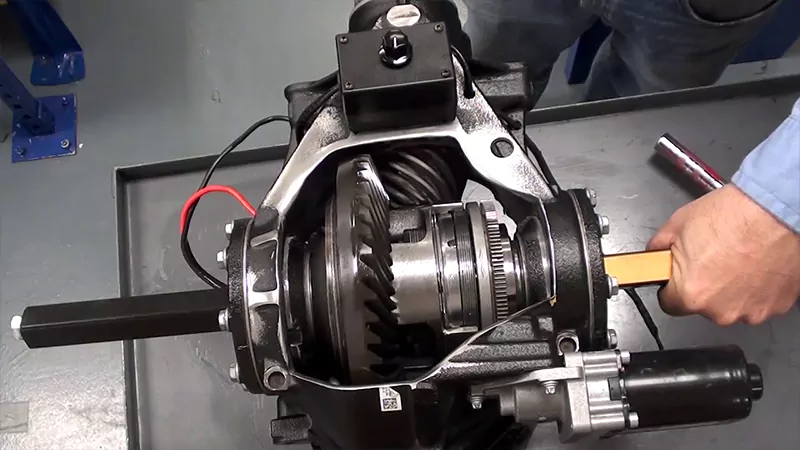In today’s cars, torque vectoring is becoming a game-changer, especially for handling, stability, and overall driving fun. Simply put, torque vectoring is a clever system that adjusts how power is sent to each wheel, helping your car stay more stable, grip better, and handle more precisely, especially when you’re cornering or dealing with slippery roads. Let’s dive into how this tech works, why it’s so cool, and the benefits it brings to your driving.

So, What Exactly is Torque Vectoring?
Torque vectoring is a system that controls how power (or torque) is distributed between the left and right wheels. Traditional differentials just send power evenly between the wheels or based on speed differences, but torque vectoring is a lot smarter. It actively adjusts the torque sent to each wheel depending on things like road conditions, traction, and steering input, making sure the wheels get exactly what they need to maintain the best possible grip.
It’s especially useful in situations where traction isn’t great, like on wet, icy, or snowy roads, or when you’re really pushing the car in a tight corner. It keeps your car balanced, responsive, and more in control.
How Does Torque Vectoring Actually Work?
At its core, torque vectoring uses a combination of electronic sensors and mechanical parts (like clutches or gears) to figure out how much power each wheel needs. It constantly monitors each wheel’s traction and adjusts the torque distribution to keep everything stable.
There are two main types of torque vectoring systems:
Mechanical Systems: These rely more on mechanical parts, like clutches, to adjust power distribution between the wheels, and they usually don’t require as much electronic intervention.
Electronic-Mechanical Systems: These systems combine sensors and mechanical components to make real-time adjustments based on things like wheel speed, steering angle, and road conditions. It’s much more precise and responsive.
Both types work to give you better control, whether you’re on a race track, handling sharp corners, or driving in tricky conditions.
Why Torque Vectoring is Awesome
Better Cornering Performance
One of the biggest advantages of torque vectoring is how it helps you corner. When you turn, the outside wheels naturally travel further than the inside wheels, so they need more power to keep up. Traditional differentials just distribute power evenly or based on wheel speed differences, but torque vectoring sends more power to the outside wheel during a turn. This helps the car steer more precisely, reduces understeer (where the car pushes wide in a corner), and makes the whole turn feel smoother and more responsive.
Better Stability in Low-Traction Conditions
On slippery roads (like in rain, snow, or ice), it’s easy for your car to lose traction. With torque vectoring, the system can send more power to the wheels with better grip, helping you maintain control. For example, if one wheel starts to slip (like on an icy patch), the system can transfer power to the wheel that has more traction, helping you keep moving forward instead of getting stuck.
Reduces Understeer and Oversteer
Understeer (when the front wheels lose grip and the car doesn’t turn as much as you want) and oversteer (when the back wheels lose grip and the car starts to spin out) are common problems when you’re pushing your car hard. Torque vectoring helps minimize these issues. If you start to experience understeer, it can send more power to the rear wheels to help you turn better. On the flip side, if you’re dealing with oversteer, it can send power to the front wheels to help you regain control. This makes the car more predictable and safer to drive, especially at high speeds.
Increased Driver Confidence
With torque vectoring working behind the scenes, you can drive with more confidence. It smooths out your inputs, makes your car feel more stable, and helps you maintain control in tricky situations. Whether you’re racing on a track or just cruising on a wet road, the system helps keep things balanced and predictable. For enthusiasts and performance drivers, this means you can push the car further without worrying about losing control.
Where is Torque Vectoring Used?
Torque vectoring isn’t just for race cars—it’s also found in a lot of high-performance and luxury cars. Brands like Audi, BMW, and Nissan use torque vectoring in their sports models (think Audi RS, BMW M series, Nissan GT-R). These cars rely on torque vectoring to deliver better cornering, handling, and overall driving dynamics.
Off-road and all-wheel-drive (AWD) vehicles also use torque vectoring to improve traction on rough terrain. For example, systems like Land Rover’s Terrain Response and off-road rally cars use torque vectoring to distribute power intelligently to the wheels with the best grip, ensuring you can tackle tough surfaces like mud, snow, or gravel with ease.
Conclusion
Torque vectoring is one of those technologies that makes a big difference, even if you don’t always see it in action. By smartly adjusting how power is distributed between the wheels, it enhances cornering, improves stability on slippery roads, and makes driving overall more enjoyable. Whether you’re driving a high-performance sports car or tackling tough off-road trails, torque vectoring helps you maintain control, boost confidence, and get the most out of your car.
As car tech continues to evolve, torque vectoring will only get better, offering more precise control and making our driving experiences safer, smoother, and more fun.



